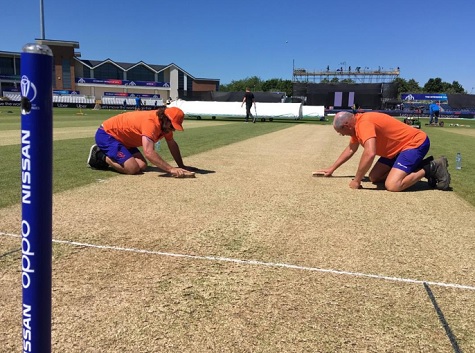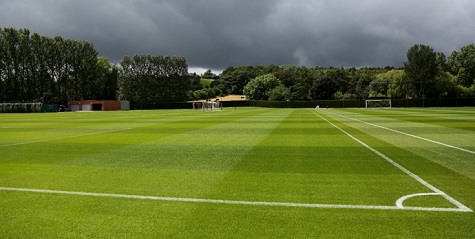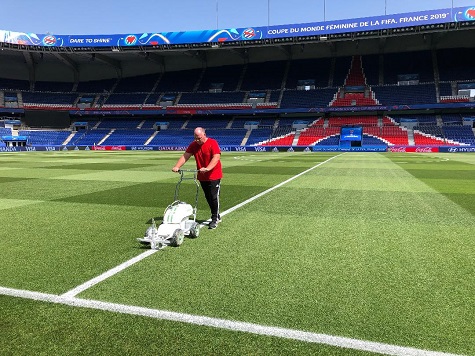July and August are generally regarded as the hottest months of the year, however, similar to last year, we seem to be having a prolonged spell of hot dry weather again that started back in May with June recording some of the hottest temperatures on record. This spell of dry weather will soon start drying out soil profiles if we do not get enough rainfall, leaving many grass roots sports pitches at the peril of the weather. However, if you do have some watering facilities and a means to water your pitches then I suggest you read Alastair Higgs article we recently published in TurfPro
That article explained the issues many groundsmen face and what actions can be taken to keep your natural grass playing surfaces watered during these hot periods.
With the cricket season soon coming to an end, many groundsmen should now be organising the renovation of their square and outfields.

A visual examination of the surface is simply not good enough. Taking a number of core samples allows you to see the amount of thatch, root density and integrity of the soil, in terms of having any root breaks or changes of the soil’s physical properties. Ideally you should be taking core samples to a depth of between 100mm-150mm.
Also the benefit of taking soil samples is you can send them off for a soil particle size analysis and nutrient status, thus giving you more information about your square.
It is important to order any materials in advance of the renovations. Seed and loam supplies can be delayed, so get your order in early.
There are some very basic aims when renovating a cricket square and these hold true no matter where the square, the standard of cricket played on it or the resources available.
The first job is to clean off as much vegetation as possible and remove any unwanted organic matter / thatch by the process of mowing, scratching, scarifying and sweeping the surface prior to topdressing. All too often I see many clubs not scarifying thoroughly enough and quite often leave too much thatch and dead fibre in the surface, which in turn gets buried after top dressing, which in turn escalates into a layering problem. You can read an in-depth article on end of season renovation here.

The end of July also sees the start of the new footballing season with many clubs back to full training and starting their pre-season friendlies. A Recent trip to Stoke enabled me the opportunity to catch up with Andrew Jackson Stoke’s Head Groundsman to see for myself the hard work that goes on in preparing pitches for the new season. This report will be featured in a forthcoming issue of TurfPro.

However, in general terms the work in June and July is cantered around the renovation and rejuvenation of their pitches, which is again made more intensive if we have an extended period of hot weather.
Once the seed has germinated it is a case of mowing continuously to thicken the sward - bearing in mind that most topflight clubs have large training grounds with many pitches as well as the stadium facilities to maintain.
Gone are the days when it was a case of mowing once or twice a week and perhaps a feed every 4-6 weeks. Most top professional groundsmen have daily maintenance programmes that encompass daily mowing, feeding and aeration work regimes. Today’s modern feeding regimes see a concoction of products being applied to ensure the turf remains healthy and able to fight off disease and pests.

The quality of football pitches are now at their very best, mainly due to the hard work and a number of advancements in renovation and maintenance techniques and the range of equipment and machinery now available for groundmen.
I am sure the new football season will be as popular as ever, with the clubs fighting it out for the cups and trophies for the 2019/20 season. Good luck to all the groundmen involved, no doubt another busy year beckons.